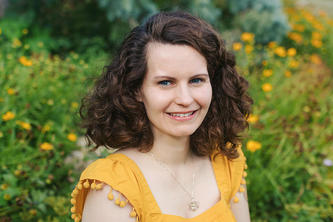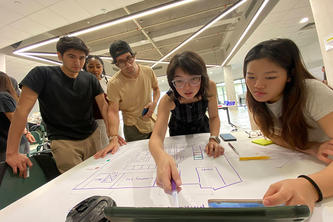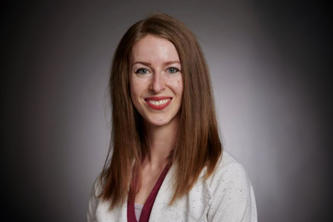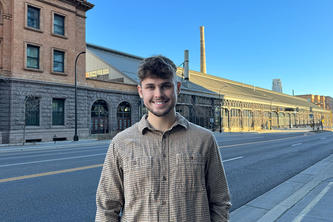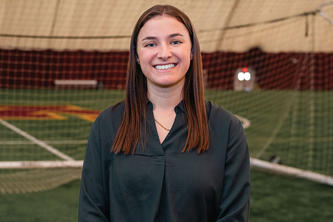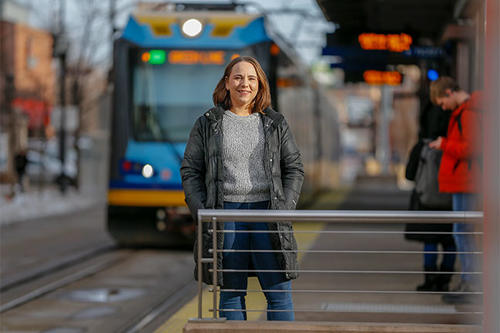
Maps have the potential to transform our ways of seeing and understanding the world. At the University of Minnesota’s geographic information systems (GIS) and spatial research center, U-Spatial, students learn to make provocative, innovative maps that do more than just show us where to go.
For example, a map might feature the sounds and people of your neighborhood, or the origins of the medicines available at an apothecary in 17th-century France.
In the case of Alysha Alloway (master of geographic information science ’19, Cabin John, Maryland), a map can explore how the homeless interact with transit in the Twin Cities, and how a community can create a transit system that meets the needs of all its citizens.
Alloway’s project, “A Better Way to Get There,” recently won the “Most Provocative/Transformative” award in the U of M’s annual U-Spatial Mapping Prize contest.
Her project asks questions like “Can food pantries exist at light rail stops, providing food access to those who need something to eat?” “Could donations to organizations like Goodwill be easier for commuters by providing donation bins at bus stops?” and “Could transit stops be more welcoming places?”
One map that is part of her project shows social service organizations within a ¼-mile of transit stops.
Another project component is real stories of transit from people who have experienced homelessness in the Twin Cities.
“Every winter, people experiencing homelessness become a topic of conversation and news headlines,” writes Alloway.
“It's cold outside, and the issue of homelessness finally feels urgent to the rest of us. Commuters get on the train in the morning, and ... [we] are met with people who did not have another place to go the night before.”
Alloway says that transit systems are a powerful tool, able to collect and distribute people, goods, and services efficiently. It’s just that, currently, the system is designed primarily for waiting.
“The problem ... isn't the people who use it for shelter—[It] is much larger than cold nights and less-cold trains. Our transit system was built with specific people in mind,” says Alloway.
Her research makes the case that transit stations should be treated as more than waiting areas.
“Until we have equitable access to shelter for all, 24-hour transit routes are crucial,” she says.
She believes that the solution starts with all of us thinking together about how transit can better meet the needs of the whole community.
“The Twin Cities can be a leader in progressive, human-centered transit design—as long as we want to be.”
-------
Explore other award winning GIS projects from U-Spatial’s 2019 mapping contest.
Alloway’s research was conducted as part of her work with Professor Thomas Fisher at the Minnesota Design Center and was funded by the Center for Transportation Studies.
- Categories:
- Social Sciences

